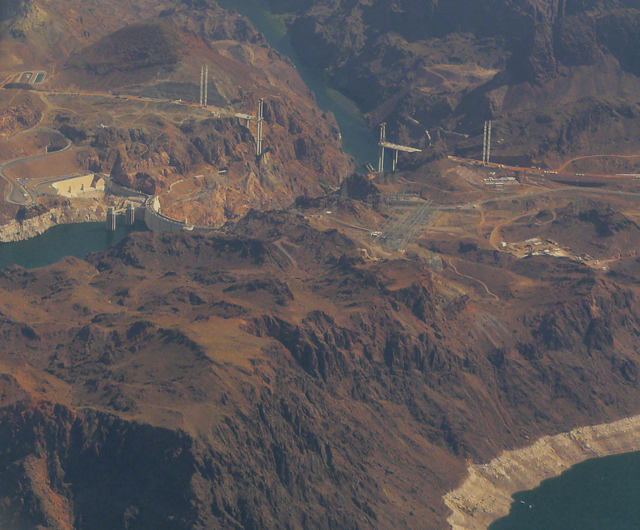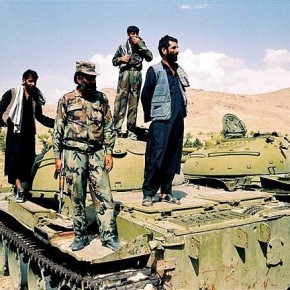Climate change is dominating the global news cycle as never before. With every catastrophic storm and highly unusual spate of weather, the possibility that we have irreparably destabilized the Earth’s delicate ecological balance looms larger. Even in the United States, where, despite — or perhaps because of — a comparatively high standard of living and learning, denial of this dire situation has been rampant, the tide is tuning.
The biggest reason? California. When the story broke recently that the extreme drought which has befallen the state in the past few years has so depleted its water supply that a complete collapse could happen within the year, the proverbial lightbulb switched on over many people’s heads. Coping with an unusually severe winter, as many Americans in the eastern half of the United States just did, is one thing; confronting the prospect of a population almost the size of Poland’s suddenly not being able to live where they live is another entirely.
California’s unique standing is certainly contributing to the mounting sense of panic. We are all acquainted with the phenomenon where a “tragedy” somewhere in Europe or the United States gets a disproportionate share of press compared to what’s happening elsewhere in the world. Just imagine how the Ebola crisis would have been covered if it had been centered in Germany. But even when compared to other storied locations in the West, California has a special place in the cultural imaginary.
Named after a fictional utopia, it was already serving as a repository for dreams of a better life before becoming a state. California was the place people went when they wanted to leave their current life behind, the place they went to become new. That logic only intensified with the Gold Rush, the Oil Boom, the spread of big-business agriculture and the commercial and residential development that inevitably accompanied them. By the time Hollywood became the de facto capital of international film production in the early twentieth century, California was firmly established as “dream factory” to the world.
And so it remains, despite being challenged from Asia and Europe. While the Islamic State in Syria may be attracting attention as the place where a certain type of youth goes to become new, even its “citizens” have seen their visions of the future amplified by culture from and about California. Without the boom in personal technology for which California-based companies have consistently led the way, ISIS’s recruitment efforts would be inconceivable. Not to mention that the staging of armed conflict in American film and television programs and their correlates in the news media has clearly exerted a profound influence on the way this organization — and many others, from Al Qaeda on down — conceptualizes spectacular terror.
The prospect of this place where dreams are made suddenly disintegrating carries tremendous subliminal force. While there’s always a sense that coming to terms with climate change means acknowledging the reality principle, when that reckoning is bound up with that principle’s “state of denial”, the impact is magnified greatly. It’s as if the very idea of progress itself were being radically called into question.
That’s why it’s especially important to remember that, while climate change may be having a profound effect on California — the rising temperatures that turned this year’s scant winter storms in the Sierra Nevada from snow to rain are a prime example — the problems besetting the state right now also derive from pretending that it is possible to change a place’s climate in accordance with our desires.
If California’s population were half of its current size, the current drought would still present a major crisis, to be sure, but it wouldn’t have the state teetering on the precipice of unprecedented catastrophe. Throughout the arid and semi-arid lands of the western United States, too many people live where it’s only possible to sustain civilization by importing vast amounts of water from afar. And California, though its boosters have long sought to communicate otherwise, lies squarely within this zone of maximal unsustainability.
The problem is particularly acute in the southern half of the state. The coastal city of San Diego gets less annual rainfall than the avowedly desert city of Tucson 500 miles to the east. Yet unlike Tucson, where “xeriscaping” leaves the majority of homeowners’ yards looking a good deal like the surrounding wilderness, the subdivisions of the San Diego area are rendered astonishingly green by irrigation. The same holds for Los Angeles, which doesn’t get that much more rain itself. In the San Joaquin and Imperial Valleys, where much of California’s agricultural bounty is produced, precipitation is so miniscule that heavy irrigation is even required in the wettest years.
Everywhere you look in California, you see evidence of these efforts to make the state’s natural resources seem as unlimited as its capacity for dreaming. As the historian Kevin Starr documents in his magisterial multi-volume history of the state — and as the 1970s neo-noir Chinatown vividly dramatizes — developers have been trying to conceal its desert reality under a veil of illusion since the 1800s. They have succeeded, too, for the most part, as the massive increase in its population attests.
But with every million people worth of “growth”, the odds of surviving on just the rain and snow that falls in a given year have diminished. The current drought has gotten so bad that farmers are now drilling wells to extract water that has been hidden underground for thousands of years. While that might make it possible for consumers to get the tomatoes, onions, and lettuce that they expect in 2015, we are very rapidly nearing the point when there will no longer be any aqueous reserves to tap.
More and more, the only solution to the crisis in California and its neighboring desert states seems to be massive emigration, of the sort Ireland experienced during the Great Potato Famine of the 1840s. People can make do without a lot of things, but water is not one of them. Sure, more stringent conservation measures can be put in place, making the state look more like the arid place it actually is rather than the land of inexhaustible plenty it has pretended to be. Yet there is ultimately only so much that this approach can accomplish so long as the human burden on the water supply maintains its current level.
In various locations throughout the American Southwest, particularly in the Four Corners region of Utah, Colorado, New Mexico and Utah, abandoned communities like Canyon de Chelly and Mesa Verde stud the landscape. Frequently set in spots that are hard to find and access, they testify to the presence of a sophisticated agricultural civilization that long preceded the European conquest of the Americans and had largely died out before the first Spaniards came ashore. Although numerous conjectures have been made about why these thriving communities suddenly ceased to exist in a matter of decades, it seems almost certain that climate change — not the sort abetted by human beings, but just the natural fluctuations of the Earth — played a key role, depriving them of the water they needed to sustain their way of life.
The eerily impressive structures left behind by the inhabitants of these communities need to serve as a kind of memento mori for the people of California and similarly arid places like the majority of Australia, not because today’s climate change can be equated with what happened centuries ago, but because its destabilizing effects are clearly capable of bringing about an equivalent depopulation. The world will not end just because California as we know it does. But the dreams that would die with its demise would leave a terrible void in the minds of all those who have been inspired by its fantastic example to leave their pasts behind.
Photograph courtesy of the author.





